หากคุณอยู่ที่นี่ คุณอาจต้องการทราบว่า การผลิตแคปซูล ใช้งานได้จริง—จากภายในสู่ภายนอก บางทีคุณอาจกำลังวางแผนขยายขนาด อัปเกรดเครื่องจักร หรือเพียงแค่ต้องการมุมมองที่ชัดเจนขึ้นของกระบวนการทั้งหมดก่อนตัดสินใจ
ไม่ว่าจะด้วยวิธีใด การแยกรายละเอียดนี้จะพาคุณผ่านแต่ละขั้นตอนโดยไม่มีส่วนที่ไม่จำเป็น เพียงแค่ขั้นตอนที่มีความสำคัญในการผลิตในโลกแห่งความเป็นจริง
สารบัญ
การผลิตเริ่มต้นด้วยเปลือกแคปซูล เปลือกแคปซูลส่วนใหญ่ทำจากเจลาตินหรือ HPMC ขึ้นอยู่กับว่าคุณใช้สูตรมาตรฐานหรือสูตรจากพืช วัสดุที่เลือกจะถูกให้ความร้อนและเปลี่ยนเป็นของเหลว
หมุดโลหะจะถูกจุ่มลงในของเหลวนี้เพื่อสร้างแคปซูลครึ่งหนึ่ง จากนั้นจึงนำไปทำให้แห้งภายใต้สภาวะที่ควบคุมอย่างระมัดระวัง เมื่อหมุดโลหะแข็งตัวแล้ว หมุดโลหะจะถูกตัดแต่งและแยกออกจากกัน เพื่อเตรียมบรรจุ
ขั้นตอนต่อไปคือผลิตภัณฑ์ที่บรรจุอยู่ภายในแคปซูล ส่วนผสมที่มีฤทธิ์จะถูกผสมกับสารช่วยต่างๆ เพื่อปรับปรุงการไหล ความเสถียร และความสม่ำเสมอ ขึ้นอยู่กับสูตร อาจต้องผสมแบบแห้งหรือแบบเม็ดเปียก
เป้าหมายคือขนาดและน้ำหนักของอนุภาคที่สม่ำเสมอ เพื่อให้แน่ใจว่าแคปซูลแต่ละแคปซูลจะมีปริมาณสารออกฤทธิ์ที่แน่นอน ซึ่งเป็นสิ่งสำคัญสำหรับความปลอดภัยและการปฏิบัติตามข้อกำหนด
เมื่อผงหรือเม็ดแคปซูลพร้อมแล้ว แคปซูลเปล่าจะถูกส่งไปยังเครื่องบรรจุ เครื่องนี้จะแยกฝาแคปซูลและตัวแคปซูลออก บรรจุผลิตภัณฑ์ลงในครึ่งล่าง จากนั้นจึงปิดแคปซูล
เครื่องบรรจุแคปซูลความเร็วสูงสามารถบรรจุผง เม็ด เม็ดยา หรือแม้แต่ของเหลวได้ ขึ้นอยู่กับการตั้งค่าของคุณ สำหรับการดำเนินการขนาดใหญ่ ระบบอัตโนมัติเป็นสิ่งสำคัญในการรักษาความเร็วและลดของเสีย
คานาอัน เครื่องบรรจุแคปซูลอัตโนมัติซีรีส์ NJP ได้รับการออกแบบมาเพื่อขั้นตอนนี้โดยเฉพาะ โดยการบรรจุที่รวดเร็วและแม่นยำพร้อมของเสียที่น้อยที่สุด สามารถจัดการกับผง เม็ด และเม็ดเล็ก ๆ ได้อย่างง่ายดาย และสร้างขึ้นเพื่อการผลิตปริมาณมากและต่อเนื่อง ซีรีส์ NJP เป็นตัวเลือกที่เชื่อถือได้สำหรับผู้ผลิตที่ต้องการความเร็ว ความแม่นยำ และความสอดคล้องในระบบเดียว
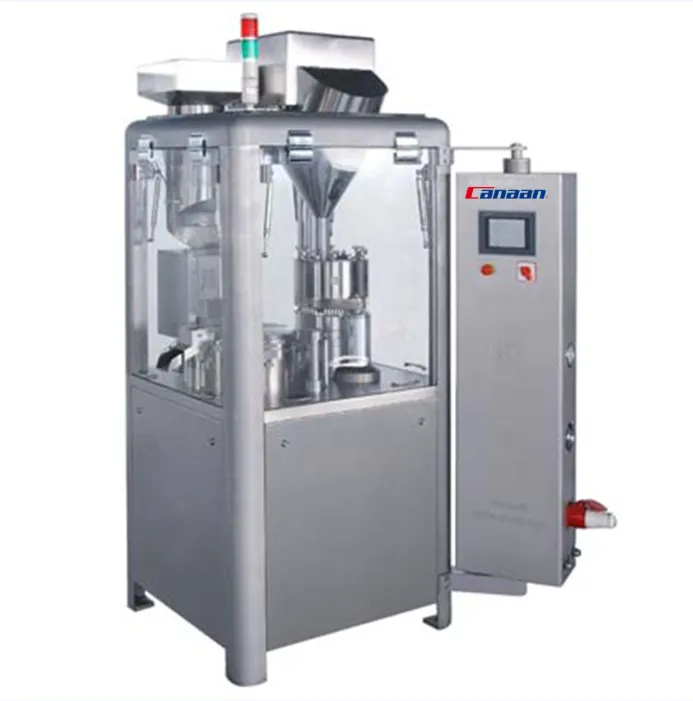
หลังจากบรรจุแล้ว แคปซูลทั้งสองส่วนจะถูกล็อกเข้าด้วยกันอย่างแน่นหนา เครื่องบางรุ่นมีฟังก์ชันปิดผนึกด้วยแถบเพื่อให้การป้องกันเพิ่มเติม ซึ่งมีประโยชน์โดยเฉพาะอย่างยิ่งสำหรับแคปซูลที่ไวต่อความชื้นหรือแคปซูลที่บรรจุของเหลว
ขั้นตอนนี้จะช่วยลดความเสี่ยงของการรั่วไหล การงัดแงะ หรือการแยกระหว่างการจัดการ การขนส่ง หรือการจัดเก็บ
แคปซูลที่บรรจุแล้วมักจะผ่านเครื่องขัด ซึ่งจะช่วยขจัดผงส่วนเกินที่อยู่ด้านนอกและปรับปรุงรูปลักษณ์ของแคปซูล นอกจากนี้ แคปซูลที่สะอาดยังมีโอกาสเกิดการติดขัดในเครื่องจักรบรรจุภัณฑ์ปลายทางน้อยกว่า
การปัดฝุ่น ช่วยให้เป็นไปตามมาตรฐานความสะอาด GMP และปรับปรุงการนำเสนอผลิตภัณฑ์ ซึ่งมีความสำคัญอย่างยิ่งสำหรับผลิตภัณฑ์ขายปลีกหรือผลิตภัณฑ์โดยตรงถึงผู้บริโภค
แต่ละล็อตจะต้องผ่านการตรวจสอบคุณภาพอย่างเข้มงวด แคปซูลจะถูกตรวจสอบข้อบกพร่อง เช่น รอยแตก การบรรจุไม่พอดี หรือสีไม่ตรงกัน นอกจากนี้ ยังมีการตรวจสอบการเปลี่ยนแปลงของน้ำหนักเพื่อยืนยันความแม่นยำในการกำหนดปริมาณ
สายการผลิตจำนวนมากมีเครื่องตรวจจับโลหะ ระบบการมองเห็น และหน่วยคัดแยกเพื่อตรวจจับข้อบกพร่องแบบเรียลไทม์ การจัดทำเอกสารในขั้นตอนนี้มีความสำคัญต่อการปฏิบัติตามข้อบังคับและการตรวจสอบย้อนกลับ
เมื่อได้รับการอนุมัติแล้ว แคปซูลจะถูกนำไปที่สายการบรรจุ แคปซูลอาจถูกบรรจุขวด บรรจุแบบพุพอง หรือบรรจุในซอง ขึ้นอยู่กับรูปแบบสุดท้าย
ในระหว่างขั้นตอนนี้ รหัสชุด วันหมดอายุ และข้อมูลการติดตามอื่นๆ จะถูกพิมพ์หรือติดฉลาก การตรวจสอบขั้นสุดท้ายจะช่วยให้มั่นใจได้ว่าบรรจุภัณฑ์ทุกชิ้นได้รับการปิดผนึก สะอาด และพร้อมสำหรับตลาด
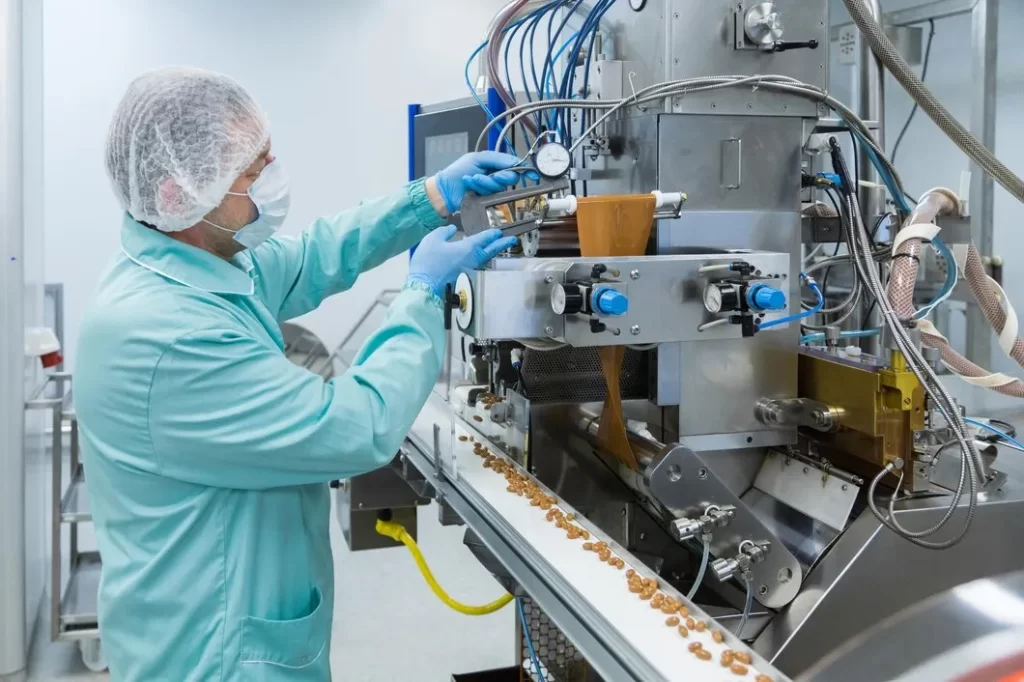
การดำเนินการสายการผลิตแคปซูลให้ราบรื่นขึ้นอยู่กับการมีอุปกรณ์ที่เหมาะสมในแต่ละขั้นตอน เครื่องจักรแต่ละเครื่องมีบทบาทในการรักษาผลผลิตให้สม่ำเสมอ ลดข้อผิดพลาด และเพิ่มประสิทธิภาพให้สูงสุด
โดยใช้ ระบบบูรณาการ—โดยที่เครื่องจักรแต่ละเครื่องทำงานร่วมกันอย่างสอดประสานกัน—ช่วยลดระยะเวลาหยุดทำงาน ลดต้นทุนแรงงาน และปรับปรุงการตรวจสอบย้อนกลับ ซึ่งมีความสำคัญอย่างยิ่งสำหรับบริษัทที่จัดการ SKU หลายรายการหรือดำเนินการภายใต้หน้าต่างการจัดส่งที่เข้มงวด
แคปซูลมีหลายรูปแบบ และการผสมผสานที่เหมาะสมนั้นขึ้นอยู่กับผลิตภัณฑ์ ตลาด และเป้าหมายการผลิตของคุณ ด้านล่างนี้เป็นตัวเลือกหลักที่ควรพิจารณาเมื่อเลือกประเภทแคปซูลและวิธีการปรับแต่งให้เหมาะกับแบรนด์ของคุณ
ประเภทวัสดุ:
ขนาด:
ตัวเลือกสีและการสร้างแบรนด์:
ประเภทการเติม:
การปรับแต่งแคปซูลของคุณไม่เพียงแต่ช่วยปรับปรุงการใช้งานและความน่าดึงดูดบนชั้นวางเท่านั้น แต่ยังรองรับการปฏิบัติตามข้อกำหนด เอกลักษณ์ของแบรนด์ และความไว้วางใจของผู้บริโภคอีกด้วย
การผลิตแคปซูลเป็นกระบวนการที่แม่นยำซึ่งต้องอาศัยการตั้งค่าที่เหมาะสม การจัดการที่มีทักษะ และเครื่องจักรประสิทธิภาพสูง ไม่ว่าคุณจะผลิตในระดับเล็กหรือจัดการแคปซูลหลายล้านแคปซูลต่อวัน ทุกขั้นตอนมีความสำคัญ
ที่ คานาอันเราจัดเตรียมอุปกรณ์และความเชี่ยวชาญเพื่อช่วยให้คุณผลิตแคปซูลอย่างมีประสิทธิภาพและมีมาตรฐานสูงสุด
จำเป็นต้องอัพเกรดสายการผลิตแคปซูลของคุณหรือไม่? ติดต่อเรา เพื่อพูดคุยกับทีมงานของเรา—เราพร้อมช่วยให้คุณปรับขนาดได้อย่างชาญฉลาดยิ่งขึ้น
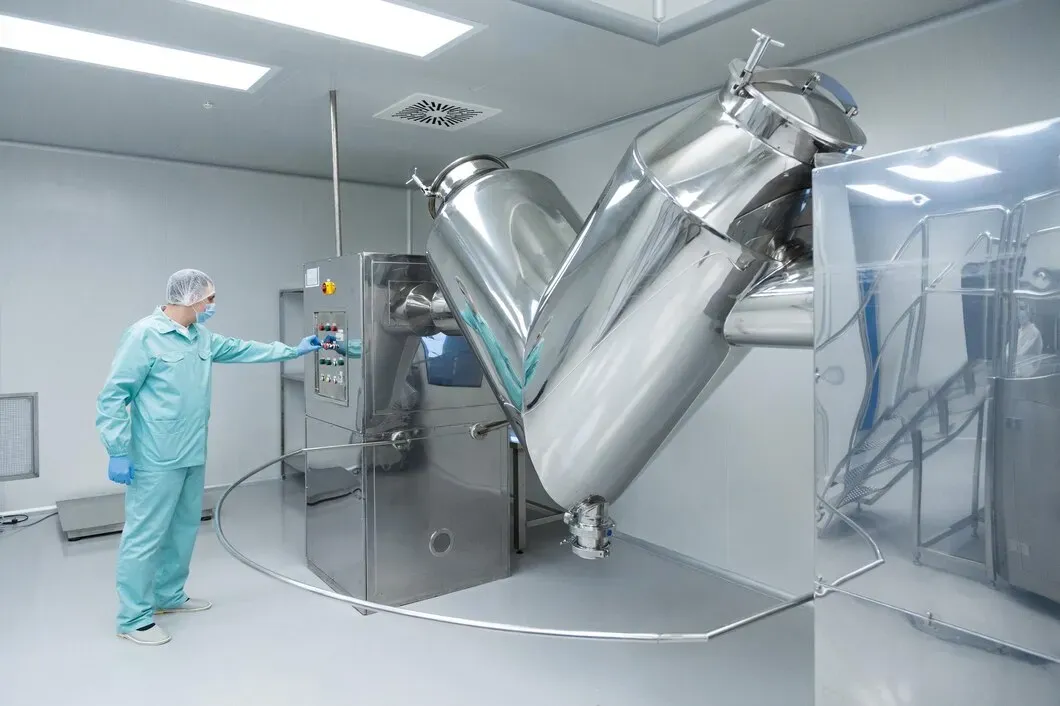
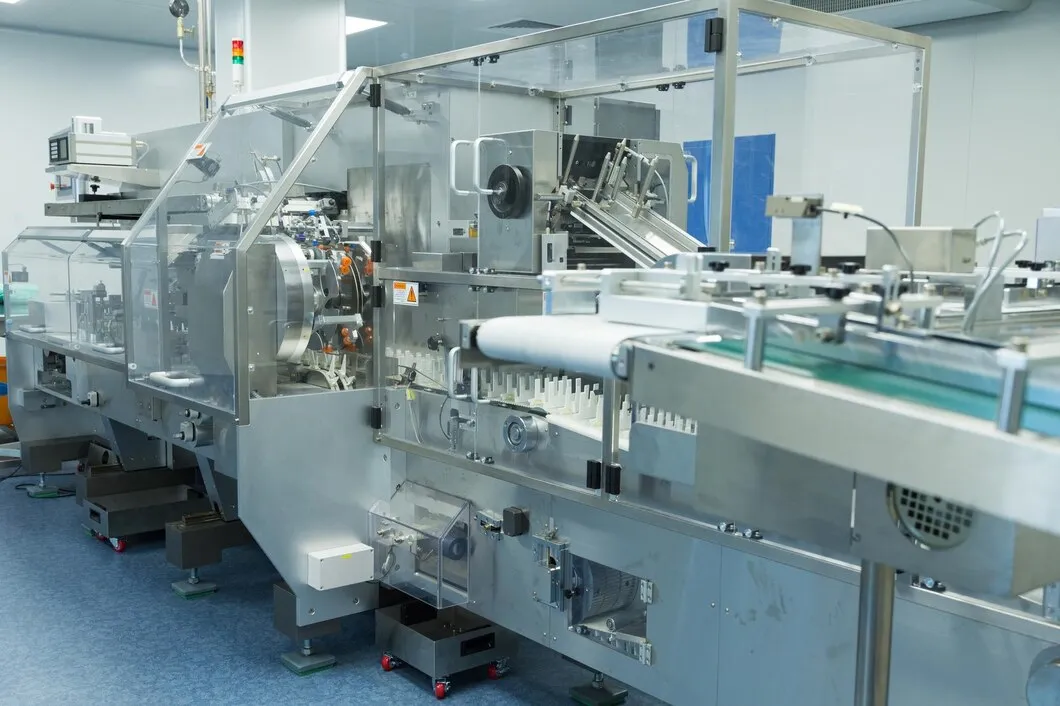
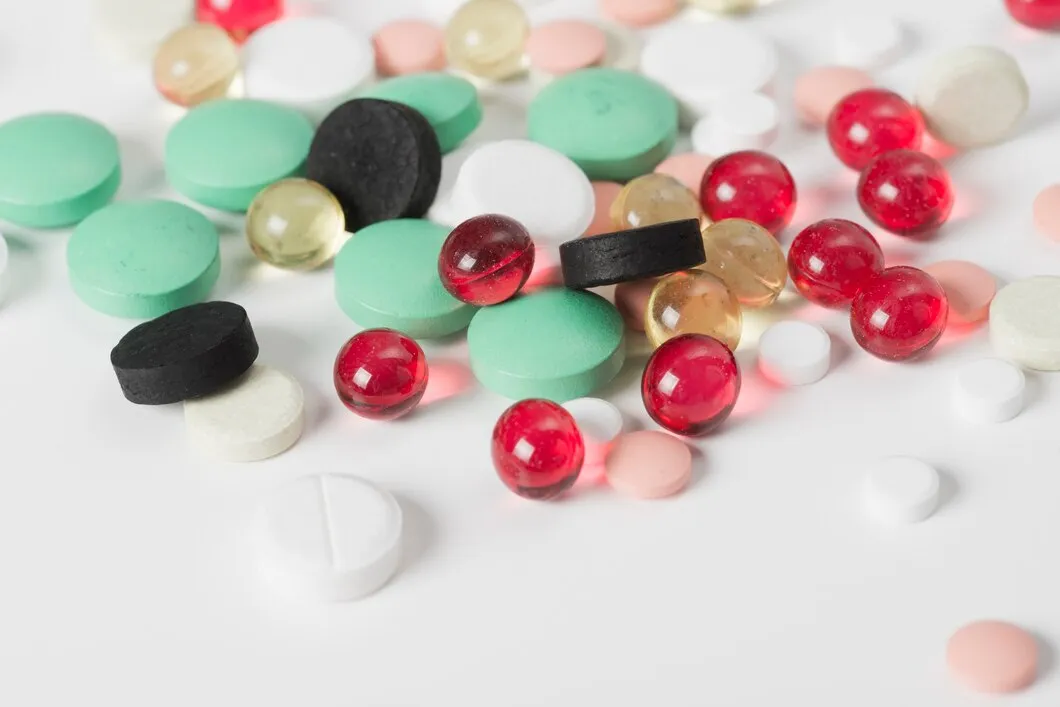

ก่อนที่ยาจะไปถึงมือผู้ป่วย จะต้องเริ่มจากห้องแล็ปเสียก่อน ซึ่งเป็นที่ที่สูตรยาจะถูกทดสอบ ตรวจสอบชุดยา และยืนยันหรือตั้งคำถามถึงคุณภาพ เพื่อให้ทำงานได้อย่างถูกต้อง ห้องแล็ปจะต้องพึ่งพาอุปกรณ์ที่เหมาะสม ซึ่งเครื่องมือเหล่านี้ไม่เพียงแต่ทำหน้าที่ให้สำเร็จลุล่วงเท่านั้น แต่ยังทำงานได้อย่างแม่นยำอีกด้วย หากคุณมีหน้าที่รับผิดชอบในการดำเนินการหรือ […]

บรรจุภัณฑ์แบบพุพองมีอยู่ทั่วไปในอุตสาหกรรมยา ไม่ว่าจะเป็นยาเม็ด แคปซูล หรือบรรจุภัณฑ์ตัวอย่าง บรรจุภัณฑ์แบบนี้ช่วยปกป้องผลิตภัณฑ์ ยืดอายุการเก็บรักษา และเพิ่มความปลอดภัยให้กับผู้ป่วย แต่สำหรับผู้ผลิตแล้ว บรรจุภัณฑ์แบบนี้ไม่ใช่แค่บรรจุภัณฑ์เท่านั้น แต่ยังเป็นระบบที่สร้างขึ้นโดยคำนึงถึงความเร็ว ความแม่นยำ และการปฏิบัติตามข้อกำหนด หากคุณอยู่ในอุตสาหกรรมการผลิตยาหรือจัดซื้อบรรจุภัณฑ์ นี่คือสิ่งที่คุณจำเป็นต้องรู้เกี่ยวกับบรรจุภัณฑ์แบบพุพอง […]

หากคุณกำลังตัดสินใจว่าจะส่งมอบผลิตภัณฑ์ยาหรืออาหารเสริมอย่างไร รูปแบบที่คุณเลือก ไม่ว่าจะเป็นเจลหรือเม็ดยา จะไม่เพียงแต่ส่งผลต่อรูปลักษณ์ของผลิตภัณฑ์เท่านั้น แต่ยังส่งผลต่อวิธีการผลิตผลิตภัณฑ์ ความเร็วในการดูดซึม ประเภทของอุปกรณ์ที่คุณต้องการ และประสบการณ์ของผู้ใช้ปลายทางอีกด้วย สารออกฤทธิ์บางชนิดจะได้ผลดีกว่าใน […]